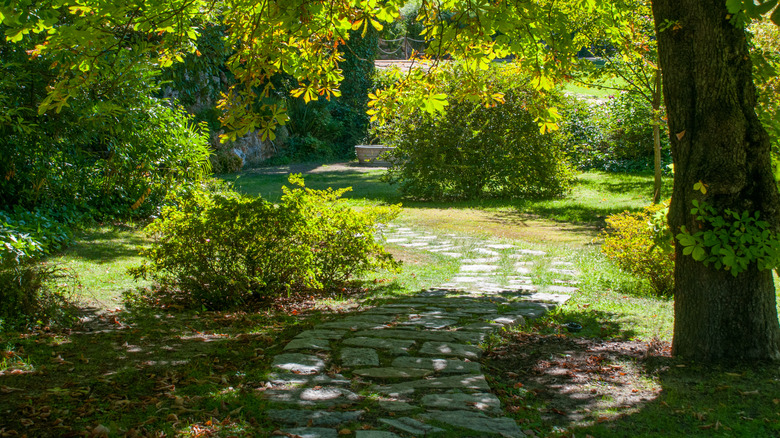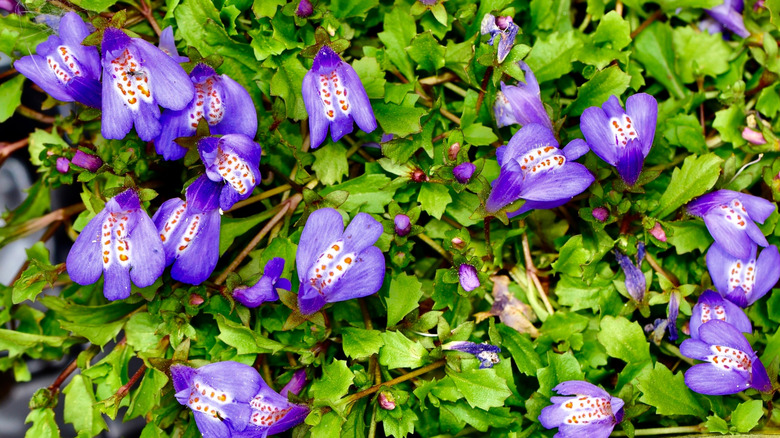The Speckled Purple Ground Cover That Thrives Under Trees
Bare spots, soil erosion, and a lack of moisture retention can occur in areas of your yard that don't have a good ground cover, but establishing ground cover plants isn't always as easy as seeding and forgetting. Most popular ground cover options, like grass, need full sun to thrive, so it can be hard to find cover for the shady, damp areas of your yard. There are some ground cover plants that love shade, such as common wild ginger or golden ragwort, but if you're looking for a truly striking option, few can offer the same beauty and coverage as creeping mazus (Mazus miquelii, previously known as Mazus reptans). Creeping mazus is a member of the snapdragon family that loves to soak up the shade and grows well in moist soil under trees.
Creeping mazus is much more than just your standard green ground cover; when it's established in the right conditions, this plant will also reward its gardeners with intriguing, speckled purple blooms. While it is a pretty and low-maintenance ground cover option, there are still some details to be aware of before planting creeping mazus in your yard. Here's what you need to know about creeping mazus, how it can beautify the soggy spots around your trees, and tips for growing and maintaining this fast-growing plant.
Creeping mazus forms blooming carpets in shade
Creeping mazus is an herbaceous perennial that is native to the Himalayas and other parts of East Asia. While it isn't native to North America, it is commonly grown in the United States and can perform very well in USDA zones 5 through 8. Creeping mazus has a high tolerance for cool, moist soil, making it one of the best ground cover plants that thrive around tree roots. Each creeping mazus plant will reach only about 3 inches tall, but with an outward spread of up to 12 inches, and it can quickly fill in sparse, shady areas of your yard.
Because it can grow in clumps and handle some foot traffic, creeping mazus is a great choice around stepping stones or rock gardens too. Once established, the plant can be walked on and mowed much like ordinary grass, stays green through mild winters, and will produce small, orchid-like blooms in early summer.
Many people worry that some stunning lawn alternatives are actually invasive plants you should avoid, including creeping mazus. As the name might imply, creeping mazus spreads outward through root nodes that "creep" along the ground. In theory, creeping mazus has the potential to become invasive, but good planting and maintenance habits will ensure it doesn't grow out of hand. Firstly, you'll need only about six plants to fill in a square yard of soil. Growing other plants close by can encourage healthy competition and keep the creeping mazus in check, as can an occasional mowing and trimming around the garden borders.

